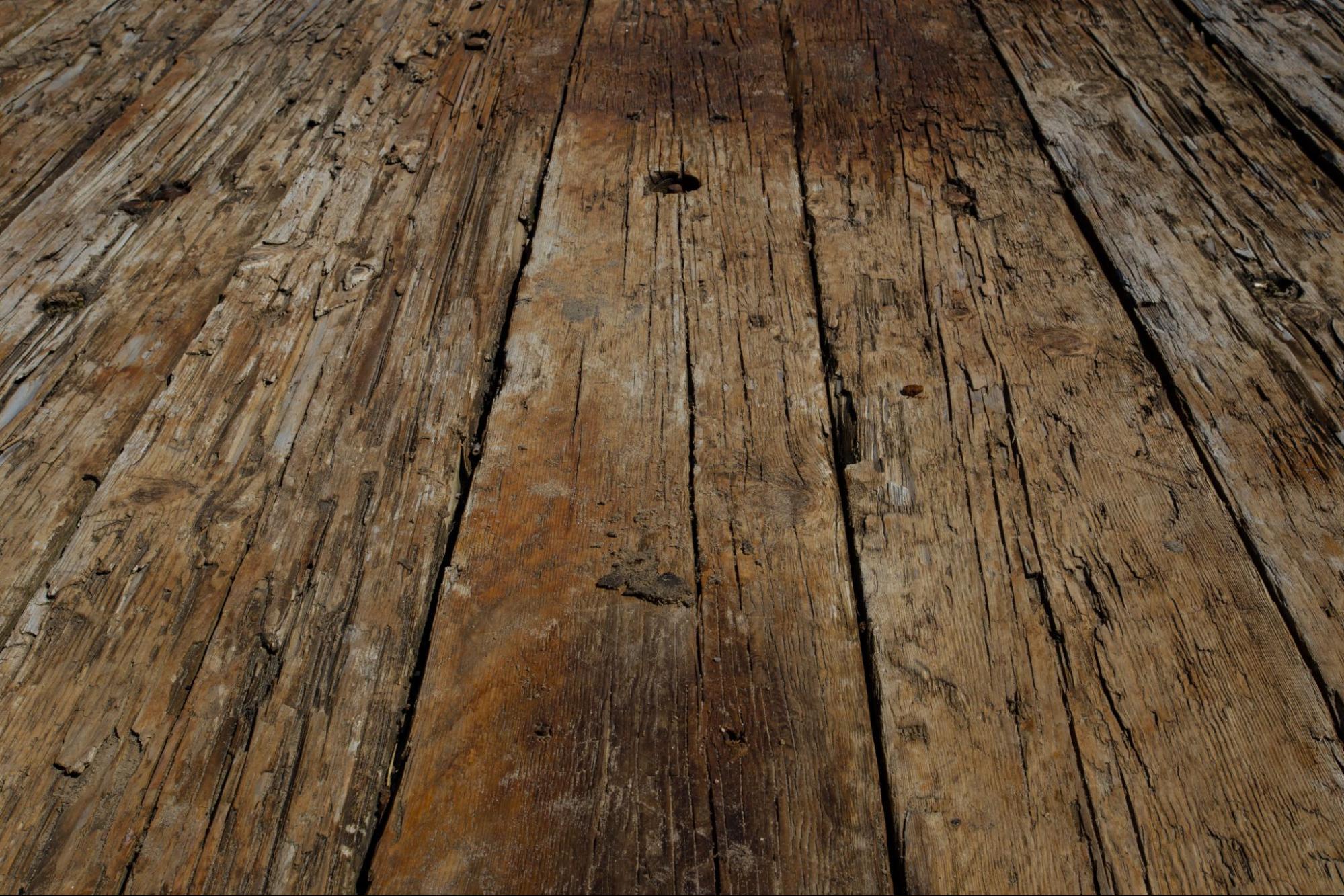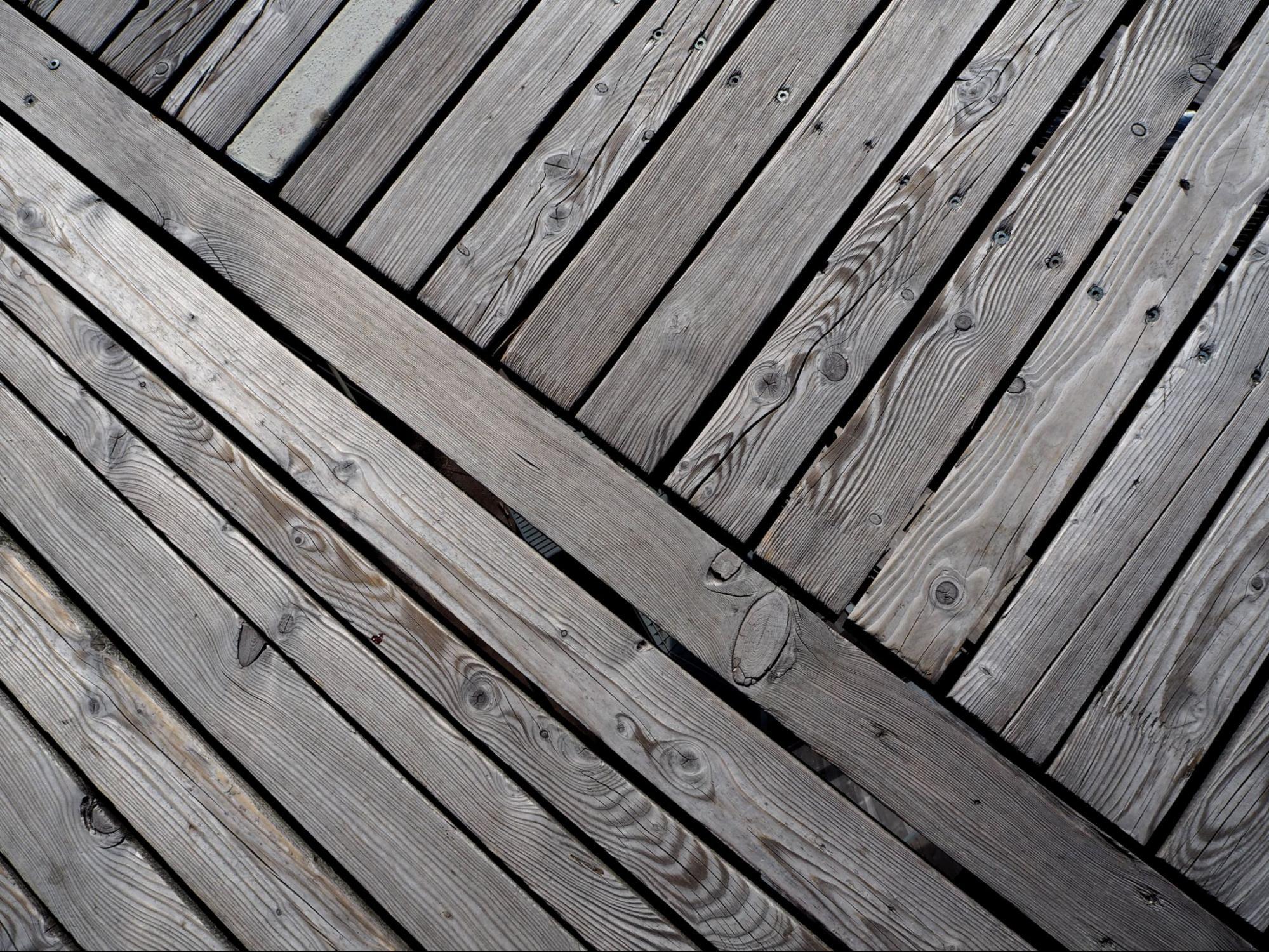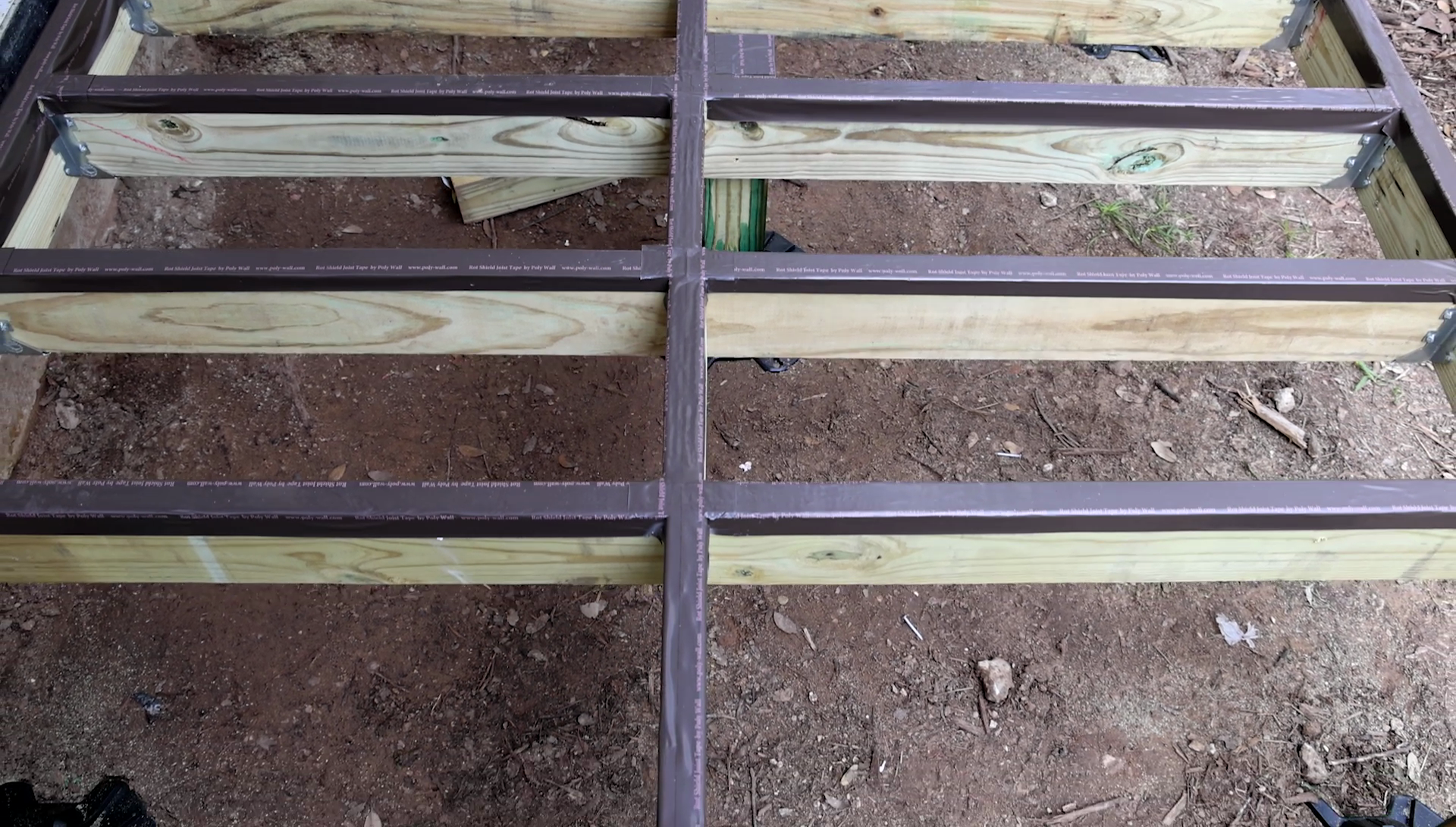Wood rot causes structural problems in a home, including deteriorating its wood deck. The cost of a rotted deck wood repair can run thousands of dollars. Therefore, protecting your wood deck's integrity and value requires identifying the causes of wood rot, implementing measures to prevent it, and understanding how to repair rotted wood decks.

What Causes Wood Rot?
Moisture and fungi (microscopic organisms) can trigger wood rot, leading to costly rotted wood deck repair. Mycologists classify fungi that cause wood rot by their three general effects on wood.
Brown Rot (Dry Rot)
Fungi target cellulose in the wood's structure, appearing as dry, brown-rot fungi on the wood's surface. As the fungi destroy the cellulose, the wood shrinks, turns dark brown, and breaks into tiny cube-shaped bits (cubital fracture). Brown rot thrives at temperatures from 65 and 90 °F. Once it starts growing, it spreads rapidly.
White Rot
Fungi on the wood look whitish or light yellow and feel spongy. White-rot fungi break down lignin in the wood, leaving behind the light-colored cellulose. White rot happens in temperatures between 65 and 90 °F, like brown rot.
Soft Rot
Fungi decompose wood slower than brown-rot and white-rot fungi. Soft-rot fungi thrive in temperatures too hot and cold for the other types to survive, between 0 and 110 °F. Soft-rot fungi break down cellulose, leaving the wood with an appearance of a honeycomb. Generally, it occurs in fallen logs and trees, but under the right conditions, it can attack a house and its deck.
Where is a Deck Most at Risk of Rot?
Horizontal decking boards and stairs, even those treated for water resistance, may not dry out sufficiently to prevent wood rot. A prime spot for rotting occurs at the bottom of painted and untreated pine balusters. Water becomes trapped under the baluster and gives fungi a chance to grow.
How to Look for Wood Rot on Your Deck?
As part of your pre-winter weatherproofing tasks, you should check your deck for wood rot annually. You'll need a good flashlight and long-handle screwdriver to test for soft spots.
Wood posts touching the ground come in more contact with moisture, which leads to wood rot and soft spots.
Common dry rot indicators include long sheets of grayish mold or darker-looking wood.
Termites may indicate dry rot since it attracts wood-eating pests.
If you find rot, inspect the surrounding area for the cause of stagnant water: gutter failure, sprinkler system issue, plumbing leaks, etc.
Seven Tips to Preventing Wood Rot on a Deck
Preventing wood rot requires removing the moisture and poisoning the fungi. However, routine inspection, cleaning, treatments, and material choice can also limit wood rot.

Here are seven tips for preventing wood rot, to help your deck last a lifetime.
Minimize the wood deck's exposure to moisture by installing a deck drainage system that will move water away from the joints and beams. Fungi need moisture levels above 18 percent to grow. Therefore, keeping the joist's moisture level below this prevents rot.
Routine deck cleaning to remove leaves and debris will significantly contribute toward preventing rotted wood decking.
Applying boric acid (borate) to the wood deck or treating an active fungus growth can effectively kill the fungi.
A bi-annual professional inspection will help identify moisture problems before they harm your deck.
Building your deck with rot-resistant redwood, mahogany, cypress, or cedar can help limit, but not eliminate, wood rot.
Pressure-treated wood offers some protection against rot, but you must still clean and coat it annually with a water-repellant.
Building with rot-resistant composite decking eliminates the problem of rotting wood decks.
Preventing Rotting Wood Deck with PolyWall Rot Shield Joist Tape
The damp, unventilated area beneath a deck makes deck joints extremely prone to fungal rot, which can lead to expensive repairs and deck failure. In addition, the fungi hyphae can spread through the wood, disintegrating the cell walls and reducing their strength. To stop deck joist rot and preserve your deck's value and integrity, builders can cold-apply self-adhering PolyWall Rot Shield Joist Tape as a flashing on deck joists and ledger boards.

Simple to apply, PolyWall Rot Shield Joist Tape provides a waterproof barrier that stops rot-causing water and debris from accumulating in the areas between the joists and deck boards. The flashing tape helps to water-seal around screw holes, metal fasteners, and hidden deck fasteners, preventing cracks and corrosion of the metal surface.
In addition, deck joist tape between treated wood and metal hangers prevents leaching copper (a preservative) from corroding the joist hinges that hold together the deck.
Properly installed Rot Shield Joist Tape will protect your deck from damaging rot, enhancing the deck's integrity and limiting costly repairs. It can also prevent corrosion.
Furthermore, UV stable (up to 120 days) joist tape will minimize initial callbacks and repairs.
Tips on How to Repair Rotted Wood Deck with Polyguard
Polyguard suggests you hire an ASHI-certified home inspector or qualified deck builder to inspect your deck for safety and determine its extent of rot damage. In addition, you can evaluate your deck's overall condition with the North American Deck and Railing Association (NADRA) 's 10-point inspection checklist. Then, depending on the damage and repair cost, you may decide on a new deck.
However, this “how-to repair rotted wood deck post” will show you a few simple tips for repairing a deck with minor rot.
Use a 5-in-1 rasp, claw hammer, or chisel to remove the rotted wood - being careful not to damage the surrounding wood.
Use wood filler, hardener, or epoxy to strengthen the rotted areas.
If you cannot remove the damaged wood, use wood filler, hardener, or epoxy to enhance the rotted areas.
Stain and seal the new boards and wood filler to protect the wood from water.
A deck adds value and aesthetics to your home; therefore, Polyguard recommends you call a professional to identify and fix areas of rot on your deck to protect your asset.
Contact the Polyguard professionals today for more tips on preventing and repairing rotted wood decking.
